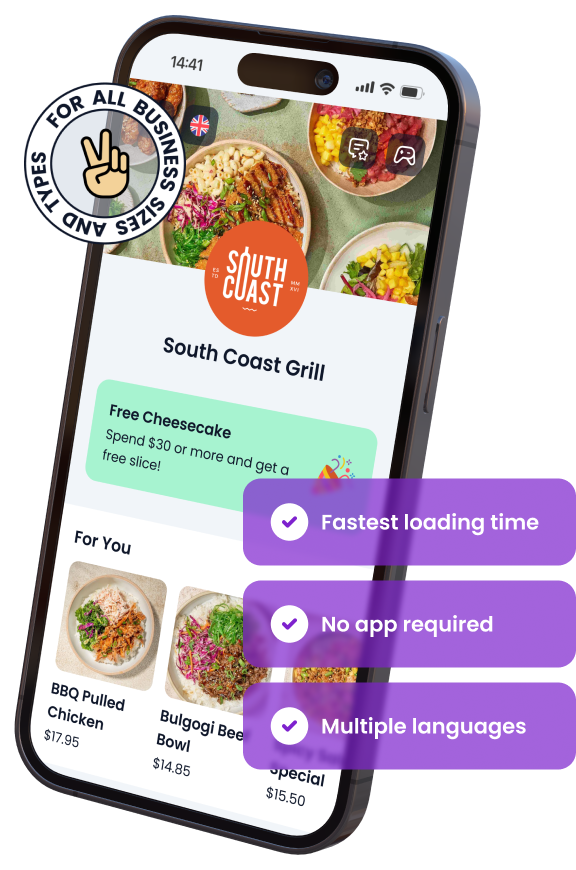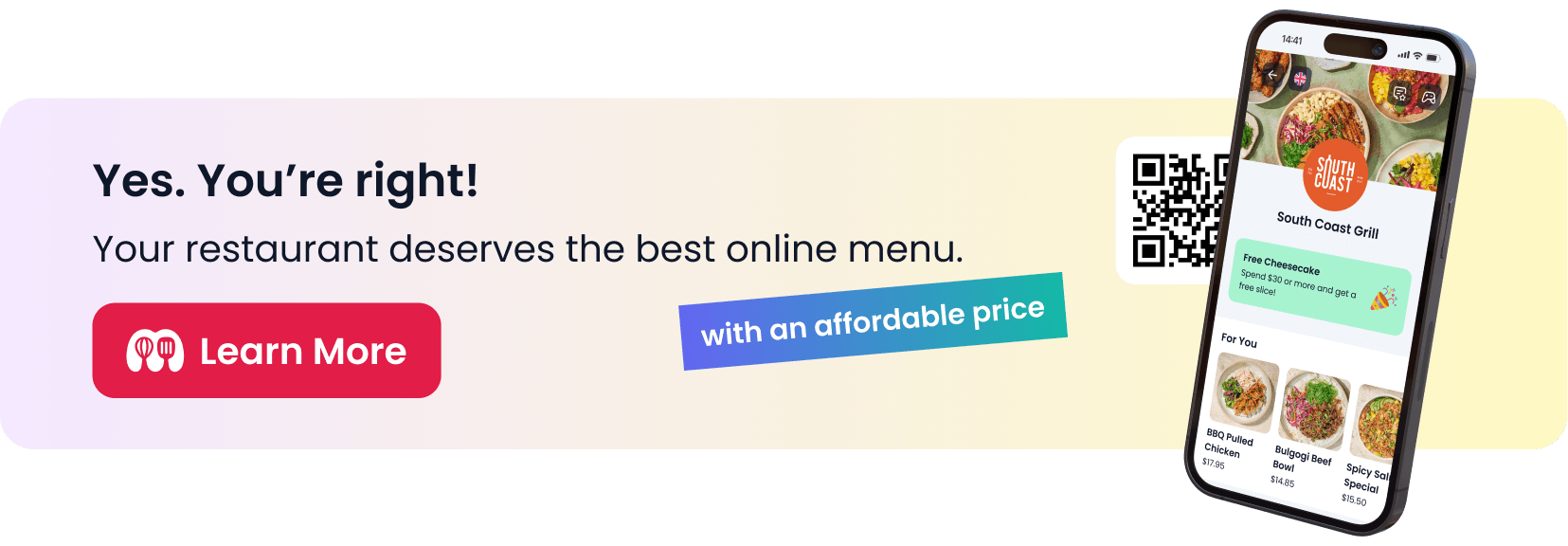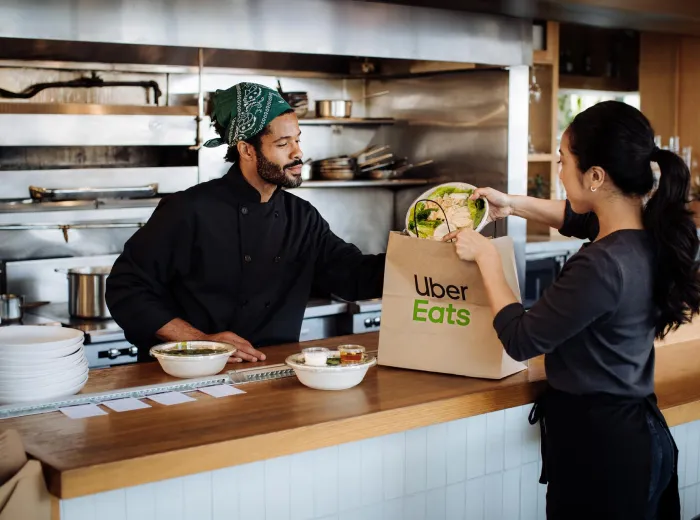

How to Reduce Employee Turnover in Restaurants?
Employee turnover is one of the biggest challenges restaurant owners face. With fast-paced environments, demanding schedules, and intense competition, retaining staff can feel like an uphill battle. Yet, high turnover rates come at a steep cost—financially and operationally—leading to disrupted workflows, inconsistent service quality, and additional hiring expenses.
In an industry where a welcoming atmosphere and reliable service are essential to success, investing in employee retention is not just a nice-to-have; it’s a must. By creating a positive workplace culture, offering competitive compensation, and providing opportunities for growth, restaurant owners can significantly reduce turnover rates and build a more stable and productive team.
This guide will explore actionable strategies to tackle employee turnover in restaurants. Whether you’re struggling to keep your staff motivated or looking to proactively improve your retention rates, these insights and practical tips will help you build a loyal and committed workforce.
Why Employee Turnover is a Critical Issue in Restaurants
Employee turnover is a common and persistent problem in the restaurant industry. The nature of the work, combined with competitive pressures and high expectations, often results in a revolving door of employees. However, the consequences of high turnover go beyond the inconvenience of rehiring. It impacts your bottom line, operational efficiency, and even customer experience. Let’s break down why this issue demands your attention.
Understanding the Cost of Employee Turnover
The financial and operational costs associated with employee turnover can be staggering. It’s important to recognize these expenses so you can see the value of investing in retention strategies:
- Direct Costs
- Recruitment costs, including advertising job openings and screening candidates.
- Training expenses for new hires, including onboarding programs and certifications.
- Wages paid to managers and trainers for additional supervision during onboarding.
- Indirect Costs
- Lost productivity during the transition period when positions remain unfilled.
- Decreased employee morale when teams are understaffed or constantly changing.
- Customer dissatisfaction due to inexperienced staff or inconsistent service.
By addressing turnover, you’re not just reducing expenses; you’re also protecting your restaurant’s reputation and operational stability.
High Turnover Rates in the Restaurant Industry
The restaurant industry has one of the highest turnover rates across all sectors. Understanding why this happens is key to crafting solutions.
- Key Statistics
- The annual turnover rate in restaurants often exceeds 70%, compared to 20-30% in other industries.
- Hourly employees and entry-level positions are most affected by high turnover rates.
- Unique Factors in the Industry
- Irregular hours and physically demanding work can lead to burnout.
- Limited career progression opportunities make employees view these roles as temporary.
- Competitive pay from other industries often attracts workers away from food service.
Acknowledging these challenges helps restaurant owners focus on systemic changes that can reduce turnover and create a more sustainable workforce.
By understanding the deeper reasons behind employee turnover and its costs, you can set the stage for meaningful improvements in your restaurant’s operations and employee satisfaction.
Common Reasons Behind High Employee Turnover
Employee turnover is often the result of multiple factors, many of which stem from workplace conditions and industry norms. Identifying these root causes is the first step in addressing and minimizing turnover. Below are the most common reasons why restaurant employees leave their jobs.
Poor Work-Life Balance
The fast-paced nature of restaurant work often comes at the expense of employees’ personal lives.
- Long Hours and Unpredictable Schedules
- Employees are frequently required to work late nights, weekends, and holidays, leaving little time for family or personal commitments.
- Last-minute schedule changes or understaffing can lead to stress and frustration.
- Impact of Burnout
- Working under high-pressure conditions can lead to emotional and physical exhaustion.
- Employees experiencing burnout are more likely to seek jobs with more manageable workloads.
Addressing scheduling issues and offering flexible hours can significantly improve work-life balance and reduce turnover.
Lack of Career Growth Opportunities
Many employees leave when they feel their job is a dead end with no room for advancement.
- Absence of Clear Career Paths
- Restaurants often fail to outline clear steps for promotions or long-term growth.
- Employees in entry-level positions may feel stuck with no incentive to stay.
- Minimal Training and Skill Development
- Lack of professional development programs makes employees feel undervalued.
- Workers may leave for roles in other industries that provide better growth opportunities.
Providing career development plans and investing in employee training can encourage long-term commitment.
Low Pay and Inadequate Benefits
Compensation is one of the leading factors influencing employee decisions to stay or leave.
- Wage Issues
- Many restaurant employees earn wages that barely meet industry standards, especially in high-cost areas.
- Tipped employees may face inconsistent earnings, leading to financial instability.
- Lack of Benefits
- Many restaurants do not provide essential benefits like health insurance, retirement plans, or paid time off.
- A lack of perks or incentives makes other industries more appealing.
By offering competitive pay and meaningful benefits, restaurant owners can improve employee satisfaction and retention rates.
Ineffective Management and Workplace Culture
The leadership and environment within a restaurant can make or break employee morale.
- Lack of Communication and Recognition
- Poor communication between management and staff creates frustration and confusion.
- Employees often feel undervalued when their efforts go unrecognized.
- Toxic Work Environment
- Conflicts with coworkers or managers can create a hostile atmosphere.
- Unclear expectations and inconsistent rules can lead to dissatisfaction and disengagement.
Fostering open communication and building a positive workplace culture can go a long way in addressing these issues.
Understanding these reasons allows restaurant owners to take targeted action, creating a work environment that attracts and retains employees rather than drives them away.
How to Create a Positive Workplace Culture
A positive workplace culture is the cornerstone of employee satisfaction and retention. When your team feels valued, respected, and motivated, they’re more likely to stay loyal and perform at their best. Here are actionable steps to create an environment where employees thrive.
Promote Open Communication
Effective communication builds trust and ensures everyone feels heard.
- Encourage Employee Feedback
- Hold regular meetings where employees can share their concerns, ideas, and suggestions.
- Use anonymous surveys to gather honest input on workplace issues.
- Address Concerns Promptly
- Show employees that their opinions matter by acting on feedback in a timely manner.
- Create an open-door policy to make management accessible and approachable.
When employees feel comfortable expressing their views, they are more likely to feel connected and valued.
Recognize and Reward Employees
Acknowledging your employees’ efforts boosts morale and fosters loyalty.
- Implement Recognition Programs
- Create initiatives like “Employee of the Month” to celebrate outstanding performance.
- Publicly acknowledge milestones, such as anniversaries or achievements.
- Offer Tangible Rewards
- Provide bonuses, gift cards, or extra time off as incentives.
- Recognize team contributions through group rewards like team lunches or outings.
Consistent recognition shows employees that their hard work doesn’t go unnoticed, motivating them to stay committed.
Foster Team Collaboration
A collaborative workplace encourages teamwork and builds stronger relationships among staff.
- Plan Team-Building Activities
- Organize activities like group dinners, escape rooms, or volunteer events to strengthen bonds.
- Hold informal gatherings to help employees connect outside of work.
- Encourage a Supportive Work Environment
- Promote a culture where team members help each other during busy shifts.
- Provide clear communication channels to resolve misunderstandings quickly.
When employees work well together, it creates a sense of unity that benefits both morale and productivity.
Focusing on communication, recognition, and collaboration will help you build a positive workplace culture where employees feel appreciated and motivated to contribute to the restaurant’s success.
Building Competitive Compensation Packages
Compensation plays a pivotal role in employee satisfaction and retention. Offering a well-rounded compensation package not only attracts talent but also ensures your employees feel valued, reducing turnover. Here’s how you can build a competitive compensation package for your restaurant staff.
Offer Competitive Wages
Employees are more likely to stay if they feel they are being paid fairly for their work.
- Research Industry Standards
- Analyze local wage trends for various restaurant roles, including servers, cooks, and managers.
- Stay competitive by offering wages that are at or above industry averages.
- Incorporate Raises and Bonuses
- Implement regular performance reviews tied to raises.
- Offer bonuses for exceptional performance, such as meeting sales targets or positive customer feedback.
Paying competitive wages demonstrates your commitment to your team’s financial well-being and incentivizes them to stay.
Provide Meaningful Benefits
Benefits add significant value to compensation packages and improve employee satisfaction.
- Essential Benefits
- Offer health insurance plans, including medical, dental, and vision coverage.
- Provide paid time off (PTO) for vacations, sick days, and personal leave.
- Additional Perks
- Offer employee discounts on meals or free staff meals during shifts.
- Provide transportation allowances or reimbursements for late-night shifts.
A well-rounded benefits package shows employees that you care about their overall well-being, not just their work output.
Implement a Flexible Work Schedule
Flexibility in scheduling can greatly improve employees’ work-life balance and job satisfaction.
- Use Scheduling Tools
- Invest in scheduling software like 7shifts or Sling to allow employees to manage shifts easily.
- Enable shift swapping and self-scheduling to accommodate personal needs.
- Respect Time-Off Requests
- Plan schedules in advance to honor employee requests for days off.
- Avoid overburdening employees with back-to-back shifts or long hours.
Flexible scheduling creates a more supportive environment, making it easier for employees to balance their professional and personal lives.
By combining competitive wages, meaningful benefits, and flexible scheduling, you can build a compensation package that not only attracts top talent but also keeps your current team motivated and loyal.
Investing in Employee Development
Employee development is a powerful tool for reducing turnover and building a loyal, skilled workforce. When employees see opportunities for growth and feel their contributions are valued, they’re more likely to commit to their roles long-term. Here are effective ways to invest in your team’s development.
Offer Comprehensive Training Programs
Training equips employees with the skills they need to excel and feel confident in their roles.
- Onboarding Programs
- Create structured onboarding processes to familiarize new hires with your restaurant’s policies, procedures, and culture.
- Pair new employees with experienced mentors for hands-on training during their first few weeks.
- Ongoing Job-Specific Training
- Conduct regular workshops or training sessions to enhance skills like customer service, food safety, or time management.
- Cross-train employees to perform multiple roles, increasing their value and flexibility within your team.
Comprehensive training builds employee confidence and competence, setting the stage for long-term success.
Establish Clear Career Advancement Paths
A clear roadmap for career growth motivates employees to stay and work toward their goals.
- Define Opportunities for Promotion
- Outline steps for advancement, such as transitioning from server to shift leader, and then to manager.
- Use performance metrics to make promotions fair and transparent.
- Provide Mentorship and Coaching
- Assign mentors to guide employees in their professional development.
- Hold regular one-on-one meetings to discuss career aspirations and provide actionable feedback.
When employees see a future within your restaurant, they’re more likely to remain loyal and engaged.
Support Personal and Professional Goals
Helping employees achieve their goals outside of work fosters loyalty and satisfaction.
- Access to Certifications and Courses
- Sponsor employees’ participation in industry certifications, such as food handling or wine pairing courses.
- Encourage attendance at local or national restaurant expos and workshops.
- Work-Life Balance and Education
- Provide flexible scheduling to accommodate educational pursuits or personal commitments.
- Support employees in pursuing degrees or certifications related to the hospitality industry.
By investing in employee development, you not only enhance the skills of your team but also create an environment where employees feel valued and motivated to contribute to your restaurant’s success. This investment pays dividends in loyalty, productivity, and customer satisfaction.
Enhancing the Hiring Process
A streamlined and thoughtful hiring process sets the foundation for building a strong, loyal team. When you focus on hiring the right people for the right roles, you reduce turnover and create a more cohesive work environment. Here’s how you can improve your hiring process.
Hire for Cultural Fit
Finding candidates who align with your restaurant’s values and culture improves teamwork and job satisfaction.
- Define Your Restaurant’s Mission and Values
- Clearly articulate what makes your restaurant unique, such as its focus on customer service, teamwork, or sustainability.
- Include these values in job descriptions and interview questions to attract like-minded candidates.
- Screen for Soft Skills
- Prioritize qualities like adaptability, teamwork, and a positive attitude over technical skills, which can be trained.
- Use situational questions to evaluate how candidates would handle real-life scenarios in your restaurant.
Hiring for cultural fit ensures that new employees blend seamlessly into your team and are more likely to stay long-term.
Improve Job Descriptions and Advertisements
A well-crafted job description attracts qualified candidates while setting clear expectations.
- Clearly Define Roles and Responsibilities
- List specific tasks and duties for each position, such as food preparation, table service, or inventory management.
- Include the required qualifications, such as certifications or years of experience.
- Highlight What Sets Your Restaurant Apart
- Mention unique perks, benefits, or workplace initiatives, such as flexible schedules or staff meals.
- Use engaging language to make the job posting appealing to potential hires.
Accurate and compelling job descriptions ensure you attract candidates who are not only qualified but also excited to work for your restaurant.
Use Structured Interviews
A consistent and well-organized interview process helps you evaluate candidates fairly and thoroughly.
- Ask Situational and Behavioral Questions
- Pose questions like, “How would you handle a difficult customer?” or “Can you describe a time you worked under pressure?”
- Focus on assessing problem-solving skills, work ethic, and adaptability.
- Involve Multiple Managers in the Process
- Have more than one team member participate in interviews to provide diverse perspectives.
- Use a scoring system to evaluate candidates on predetermined criteria, such as experience, skills, and attitude.
Structured interviews reduce bias, ensure consistency, and help you identify candidates who are the best fit for your team.
By refining your hiring process to focus on cultural fit, clear job expectations, and structured evaluations, you’ll not only attract better candidates but also build a more stable and engaged workforce. This effort ultimately reduces turnover and sets your restaurant up for long-term success.
Leveraging Technology to Reduce Turnover
Technology can be a game-changer for restaurants looking to reduce employee turnover. From streamlining communication to tracking performance, the right tools can improve efficiency, enhance employee satisfaction, and foster a supportive work environment. Here’s how you can leverage technology to retain your staff.
Use Scheduling and Communication Tools
Simplifying scheduling and communication reduces stress and improves work-life balance for your team.
- Streamline Shift Management
- Use scheduling apps like 7shifts, HotSchedules, or Sling to create clear and flexible shift plans.
- Enable shift swapping and time-off requests directly through the platform to give employees more control over their schedules.
- Enhance Communication
- Implement group messaging tools like Slack or WhatsApp to keep teams connected and informed.
- Use announcements or chat threads for updates, special instructions, or emergency notices.
Scheduling and communication tools reduce misunderstandings and promote transparency, ensuring employees feel supported and organized.
Implement Performance Tracking Systems
Tracking employee performance helps you recognize achievements and identify areas for improvement.
- Monitor Performance Metrics
- Use POS systems or dedicated software to track employee metrics such as table turnover rates, sales performance, and customer feedback.
- Analyze data to identify your top performers and reward them accordingly.
- Provide Regular Feedback
- Use performance tracking insights to conduct one-on-one check-ins and offer constructive feedback.
- Celebrate small wins and milestones to keep employees motivated and engaged.
Performance tracking tools provide actionable insights that enable managers to proactively address concerns and reward excellence.
Automate Routine Tasks
Automation can reduce workload and improve efficiency, allowing employees to focus on more meaningful tasks.
- Adopt Kitchen Display Systems (KDS)
- Use KDS to streamline communication between front-of-house and back-of-house teams, reducing errors and speeding up service.
- Implement Inventory Management Software
- Automate inventory tracking to ensure stock levels are accurate and prevent shortages.
- Reduce stress for staff by minimizing last-minute supply emergencies.
By automating repetitive tasks, employees can focus on delivering great service, leading to a more fulfilling work experience.
Leveraging technology not only enhances operational efficiency but also creates a more employee-friendly environment. These tools empower your team, making their jobs easier and more enjoyable, which can significantly reduce turnover.
Monitoring and Measuring Employee Turnover
Tracking employee turnover is essential to understanding its impact and identifying opportunities for improvement. By regularly monitoring and analyzing key metrics, restaurant owners can implement targeted strategies to reduce turnover and improve employee retention.
Calculate Turnover Rate Regularly
Knowing your turnover rate is the first step to understanding the scale of the problem.
- How to Calculate Turnover Rate
- Use the formula:
Turnover Rate (%) = (Number of Employees Who Left ÷ Average Number of Employees) × 100 - Example: If 10 employees left in a month and you had an average staff size of 50, your turnover rate would be 20%.
- Use the formula:
- Track Trends Over Time
- Calculate turnover rates monthly, quarterly, and annually to identify patterns.
- Compare your turnover rates to industry benchmarks to assess your performance.
Regularly calculating turnover rates helps you measure the effectiveness of your retention strategies and pinpoint issues early.
Conduct Exit Interviews
Exit interviews provide valuable insights into why employees leave and how you can improve.
- Ask the Right Questions
- What made you decide to leave your position?
- What aspects of the job or workplace could be improved?
- Were you satisfied with the training, management, and work environment?
- Look for Patterns
- Identify recurring themes or issues, such as pay dissatisfaction, scheduling conflicts, or management challenges.
- Use this data to prioritize changes that address the most common concerns.
Exit interviews turn employee departures into learning opportunities, allowing you to make meaningful improvements.
Regularly Assess Employee Satisfaction
Proactively gathering feedback from your current employees can help you prevent turnover before it happens.
- Conduct Anonymous Surveys
- Use tools like Google Forms, SurveyMonkey, or HR software to create employee satisfaction surveys.
- Ask questions about workplace culture, management, pay, and overall job satisfaction.
- Hold One-on-One Check-Ins
- Schedule regular check-ins with employees to discuss their experiences and concerns.
- Use these conversations to build trust and address issues before they escalate.
Monitoring employee satisfaction provides real-time insights into your team’s needs, allowing you to act quickly to improve their experience.
By consistently measuring and analyzing turnover rates, conducting exit interviews, and assessing satisfaction, you can stay ahead of potential problems and create a workplace where employees want to stay. This data-driven approach ensures that your efforts are both targeted and effective.
Retention Strategies That Work
Retaining employees in the restaurant industry requires a proactive and strategic approach. By implementing proven retention strategies, you can reduce turnover, boost morale, and foster long-term loyalty among your staff. Below are practical steps to help you build a team that stays.
Create a Retention Plan
A clear and structured retention plan provides a roadmap for improving employee satisfaction and reducing turnover.
- Set Clear Goals
- Define specific retention metrics, such as reducing turnover by 20% in a year.
- Identify key areas to address, such as pay, scheduling, or workplace culture.
- Develop an Actionable Strategy
- Implement regular team meetings to discuss concerns and updates.
- Introduce initiatives like mentorship programs or career development workshops.
- Review and Adjust
- Regularly assess the effectiveness of your retention strategies and refine them based on feedback and results.
A well-defined retention plan ensures that efforts to improve employee satisfaction are organized and sustainable.
Focus on Building Long-Term Relationships
Strong relationships between management and employees create a supportive and loyal workplace.
- Show Genuine Care for Employees
- Take time to understand employees’ personal and professional goals.
- Check in regularly to ensure they feel valued and supported.
- Foster a Positive Managerial Style
- Practice active listening and empathy when addressing employee concerns.
- Avoid micromanagement and instead empower employees to take ownership of their roles.
When employees feel respected and valued, they are more likely to stay committed to your restaurant.
Celebrate Milestones and Achievements
Acknowledging your employees’ successes and important moments can significantly boost morale and loyalty.
- Recognize Employee Contributions
- Celebrate individual achievements, such as outstanding customer service or hitting sales targets.
- Use team meetings or staff newsletters to highlight these successes.
- Celebrate Personal and Professional Milestones
- Recognize work anniversaries with small tokens of appreciation or celebrations.
- Celebrate birthdays or other personal events to make employees feel part of a family.
These small but meaningful gestures show your team that their efforts and presence matter.
By implementing these retention strategies, you can create a work environment that encourages loyalty and helps your restaurant thrive. A focus on long-term relationships, structured plans, and regular celebrations ensures that your team feels valued, motivated, and committed to their roles.
Key Takeaways
Reducing employee turnover in restaurants requires a comprehensive approach that addresses the root causes while fostering a positive work environment. Below are the key strategies covered in this guide:
- Understand the Costs of Turnover: High turnover impacts your bottom line, employee morale, and customer experience, making retention a critical focus.
- Identify Common Challenges: Address issues like poor work-life balance, low pay, limited career growth, and ineffective management to create a more attractive workplace.
- Build a Positive Workplace Culture: Promote open communication, recognize and reward employees, and encourage team collaboration to improve morale.
- Offer Competitive Compensation Packages: Provide fair wages, meaningful benefits, and flexible scheduling to meet employee needs.
- Invest in Employee Development: Implement training programs, define career advancement paths, and support personal growth to keep employees engaged and loyal.
- Improve the Hiring Process: Hire for cultural fit, create clear job descriptions, and use structured interviews to build a stable, motivated team.
- Leverage Technology: Utilize tools for scheduling, communication, and performance tracking to simplify operations and reduce employee stress.
- Monitor Turnover and Satisfaction: Regularly calculate turnover rates, conduct exit interviews, and assess employee satisfaction to identify areas for improvement.
- Implement Retention Strategies: Develop a clear retention plan, foster long-term relationships, and celebrate milestones to strengthen employee loyalty.
By taking proactive steps to address these areas, restaurant owners can create an environment that attracts and retains top talent, ensuring long-term success for both the team and the business.
Frequently Asked Questions About Reducing Employee Turnover in Restaurants
Looking to keep your restaurant staff happy, motivated, and long‑term? Here are five common questions restaurant owners and managers search for—along with clear, actionable answers to help you reduce turnover and build a loyal team.
Why is employee turnover so high in the restaurant industry—and how can I lower it?
High turnover—often exceeding 70% annually—is common in the restaurant industry due to irregular hours, physical demands, low pay, and limited career paths. To reduce it, focus on creating a positive work culture, offering competitive pay and benefits, providing development opportunities, and improving scheduling and management practices.
What strategies can I use to make my restaurant’s compensation package more attractive?
Start by researching local wage benchmarks and offering fair or above‑market wages. Include meaningful benefits like paid time off, health/lifestyle perks, and staff meals. Flexible scheduling—using tools like 7shifts or Sling—also boosts work‑life balance and retention.
How can training and career development help reduce turnover?
Employees who see a path forward are more likely to stay. Offer structured onboarding, ongoing job‑specific training, cross‑training, mentorship, and clear advancement steps (e.g., server → shift lead → manager). Supporting certifications and flexible scheduling for education further reinforces your investment in their growth.
What role does management and workplace culture play in keeping staff?
A supportive culture—built through open communication, recognition, and teamwork—makes a difference. Encourage feedback, conduct team meetings, celebrate achievements, and foster collaboration. When employees feel valued and connected, they’re far less likely to leave.
How can I measure turnover and use that data to improve retention?
Regularly calculate turnover rate using the formula:
Number of employees who left ÷ average number of employees × 100. Track trends monthly, quarterly, or annually and compare to industry averages. Conduct exit interviews and satisfaction surveys (anonymous or one‑on‑one) to uncover root causes and inform meaningful changes.
ABOUT THE AUTHOR
Erkin Coban
Your Customers Deserve The Best
And we got Menuviel for them.
The fastest and easy-to-use online QR menu with 12+ unique features. Choose Menuviel and elevate your service quality to the next level.
Use free for the first 30 days.

In This Article

Free AI Tools for Restaurants
TRY NOW ➜

Show bitterness level with clear labels
Clearly mark each dish as mild, hot, or very hot to match customer preferences and avoid complaints.





